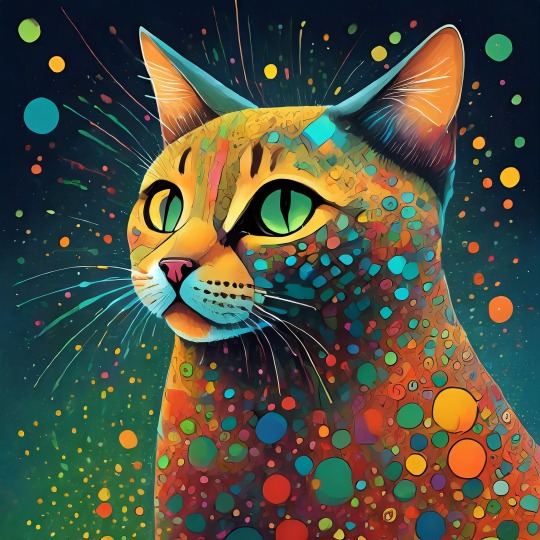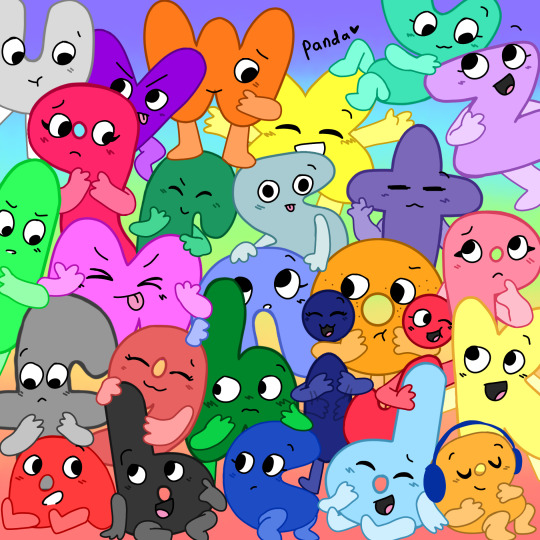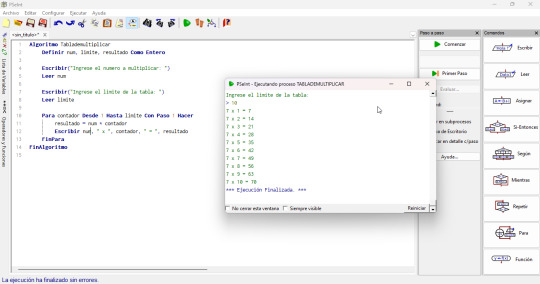#Variables
Text
My two favourite variables in the game are called ReadyToDoCrime and ActivateTheBees
175 notes
·
View notes
Text
Okay so here we have the quickest of quick run throughs on how to utilize variables. Here's the basics:
Whatever --variable: ###; says, you can pull it with var(--variable) and it will keep you from having to repeat color codes, as well as make things easier to switch based on light and dark mode, text size changers, member groups, any and everything.
Feel free to check out the example I was playing with here but this comes with the same contingencies as the grid tutorial base I created which is: the template i’m using as an example is free to use as a base, without credit, same with all the others in my tutorials so far, so long as you are using it to actually make your own. With this one, please don’t use it with no significant changes and try to claim it as your own, that would be pretty dishonest. It's also really quickly and shoddily made so again, not something you want to use without changes anyway which is why I made it [Needs Permission] to denote this stipulation. If you do that, throw some credit in your guidebook or something, i don’t mind, just throw a bone on that one because at that point it is solely my template and not the tutorial itself you are using. But even then, you’re free to use it with credit.
Anyway! If I didn't explain anything well (I probably didn't, this is very quick, I recognize I could definitely be more thorough here but this was created as the most basic of basic overviews of variables and so you could see it in action) let me know your questions and I will answer them as best I can.
And, for anyone who cannot listen to the tutorial, here's a quick overview of what I was basically saying:
Basically, variables are shorthand. instead of ###, ###, ### for the accent color, you just put var(--accent1RGB) or instead of #hexcode you'd put var(--accent1) or however you name them, but the --accent1: #hexcode means that anywhere you are trying to pull that hexcode you'd put var(--accent1).
So for any color you're using, versus repeating it, you can just do something like --bg1: #dedede; and then you don't have to type #dedede ever again, it automatically pulls it in with var(--bg1).
Once you understand it, it's super simple, but again if you need anything further explained or you're more of a hands on learner and wanna walk through it with me, feel free to just reach out, I really don't mind.
Hope this helps! Have a great day, y'all.
28 notes
·
View notes
Text




Scatter Plot Cats (ai) These really shouldn’t have come out nearly as good as they did. ( 1-4 of 8 )
25 notes
·
View notes
Note
Heya. I have a question. If Cale dies, and get reincarnated, will he retain his aps? I feel like he wont because the aps are not fully integrated to his soul and the aps are left behind when a person dies no? But we dont have a precedent happening or a mention if a person reborn with an ancient power will be reborn with his ancient pwer because... what do u think?
You posed quite the difficult question, I admit! It's such a complex situation, because Cale is an unusual person for so many reasons... Let's try to approach this topic from 4 different angles, how about that?
The first angle is, "Would a person who originally developed a power of nature (which will then after generations become known as an Ancient Power) reincarnate with their Ancient Power, unlike a person who inherited the power further down the line?"
The second angle is, "Does a person who absorbed the Ancient Power fully have different chances of keeping them after reincarnation, when compared someone who didn't absorb it fully?"
The third angle is, "Does a transmigrator have higher chances of reincarnating with their Ancient Power, when compared to a non-transmigrator?"
And the fourth angle is, "Would a person with 5 natural attributes and special bonds with his Ancient Powers reincarnate with all of them intact?"
Each of those questions covers a completely different case.
(Spoiler warning, if you haven't read the whole novel yet!)
For the first angle, we actually got not just one, but TWO examples for the contrary. People who die leave their powers behind, unless they become a divine being. It doesn't matter if they were the "original owner" or someone down the line.
Such is the case for Jour Thames, who (presumably) inherited her power from her family: she died and reincarnated in Korea without Annual Rings of Life.
We see the same thing with Cage, who is strongly implied (practically confirmed) to be the reincarnation of the original Glutton Priestess in the God of Death's journal. Cage apparently went through a whole cycle of dimensions before reincarnating again in the same one after 10,000 years. And she doesn't have the power of the Indestructible Shield anymore. It's not even similar to her current powers.
People like Nelan Barrow/Choi Jung Gun, or Cheapskate and Super Rock, who became divine beings after their deaths... they left their Ancient Powers behind, yes. But kept some sort of power at the time time. I assume that power evolved into a more powerful version of what they could do as mortals.
The second angle, about absorbing Ancient Powers affecting whether a person would reincarnate with them or not... honestly, there doesn't seem to be any proof either way in canon. But considering that being the "original" or the "heir" to an Ancient Power doesn't seem to make a difference, I would assume that it probably makes no difference. Whether Cale fully absorbed his Ancient Powers or not, it wouldn't change his chances of reincarnating with them.
The angle with transmigration is definitely interesting... mainly because reincarnation and transmigration are NOT the same thing.
Cale transmigrated, for example, and he kept his original Earth abilities. However, the same could not be said for Sui Khan/Lee Soo Hyuk, who was able to pass on his Embrace ability onto Cale before recieving his "reward" and being fully reincarnated with his memories. Sui Khan doesn't seem to have either Embrace nor his mysterious slashing ability anymore (which, according to Cale, used to belong to Choi Jung Gun for some reason...), despite having memories of his previous life. I might be wrong about it, of course, but if that was the case then he probably wouldn't even need to pass Embrace to Cale in the first place. The God of Death could have sent Cale in memory-less Sui Khan direction and have HIM use the power on the Sealed God directly. The fact that it was necessary to pass it to Cale at all makes it seem as if the power was lost completely, if it wasn't passed onto someone.
The last angle applies to Cale specifically, as someone who has a truly unusual set of powers and abilities all at once. I'm pretty sure no one else like Cale exists or HAVE ever existed before.
Putting aside my personal prediction of Cale becoming a divine entity by the end of Part 2... What would happen, in theory, if Cale died and didn't become a god? Would he reincarnate with his Ancient Powers due to his extremely unusual circumstances?
Short answer? Probably he wouldn't. But I can't completely dismiss the theory, either. Cale broke so many rules of the world, what's one more? If someone could reincarnate with his Ancient Powers, despite all evidence pointing to the fact that it shouldn't be possible unless he was a reincarnator like the White Star... Honestly, if anyone COULD do that, it'd 100% be Cale. Especially considering that he has Record, a very mysterious power which has decent chances of preserving memories in spite of all odds. Possibly even death. So...
To answer your question of "Would a person with an Ancient Power be reborn with that power?", I say: probably not. It's unlikely.
Impossible, though? I wouldn't say that.
#tcf#trash of the count's family#lcf#lout of the count’s family#tcf meta#replies#q&a#cale henituse#ancient powers#tcf theory#reincarnation#variables
116 notes
·
View notes
Note
Hellooo!! How are you?
I have something for you- So I noticed that when you choose sociable and charismatic, the shy stat goes up 5%, I think you meant for it to be for Bold...maybe idk
So that's actually on purpose! It's because the Charming stat goes up by 15, as that's the chosen specialty through that particular choice, but I don't want people to start at 0 for shy because some people are sociable and charismatic and charming, but it doesn't mean they're never shy. So you can think of the 5 points in shy as like, the minimum shyness you can be.
#the bureau#interactive fiction#interactive novel#writing#wip#work in progress#original story#choicescript#stats#variables
14 notes
·
View notes
Text
*slams notepad on table*
THERE ARE TOO MANY VARIABLES AT PLAY FOR ME TO REACH ANY SORT OF CONCLUSION!!!!!!!
#dougie rambles#personal stuff#notepad#my poor attempt at a joke#variables#speculation#analysis#what#no context#this sounded funnier in my head#shitpost#highbrow shitposting#weapons grade shitpost#table#thinking
9 notes
·
View notes
Text

Silly little variables! All squished together!!
All of these are my ocs, except x of course.
I changed c and i's color
✨reblogs are appreciated✨
#my art#drawing#art#drawings#artists on tumblr#my ocs#inanimate insanity#bfdi#variables#the sillies#silly little ocs#im too obessed with my own ocs#tumblr didnt let me post this before bc it didnt like the timelapse file and i didnt save a draft so i lost all the tags i put aaaaa#object oc#object show oc#object show#i wanna make comics about them#panda drew this
7 notes
·
View notes
Text

Man, This took a while
13 notes
·
View notes
Text






Mira - Variables (2019).
17 notes
·
View notes
Text
Beloved X !!

#x bfdi#x bfb#x xfohv#bfdi#bfb#battle for dream island#battle for battle for dream island#object show#algebraliens#variables#comfort character#my art#xfohv
32 notes
·
View notes
Text
¿Por qué tememos enfrentarnos a la verdad?
La verdad puede ser dolorosa, incómoda o amenazante. Puede cuestionar nuestras creencias, valores o identidad. Puede hacernos sentir vulnerables, culpables o avergonzados. Puede obligarnos a cambiar o asumir responsabilidades.
El miedo a la verdad puede ser el temor a poseer determinadas ideas o el convencimiento de que otras personas las posean y nos las impongan. Pero el miedo no es una idea, es una emoción. El cerebro humano está dotado de un sofisticado sistema del miedo que puede fácilmente condicionarse.
Resolver la ambigüedad con frecuencia es hacer una elección que consideramos verdadera. Si el miedo a la verdad es un mecanismo de protección frente a ciertos riesgos, reales o imaginarios, personales o sociales, podemos caer en la seducción de lo irracional como remedio a la angustia.
Atreverse a luchar por las cosas que queremos no siempre resulta fácil. El fracaso es uno de los miedos más grandes y está presente incluso en las pequeñas decisiones. Aunque es visto como un gran enemigo, las lecciones que nos da son más valiosas que el triunfo y la facilidad que siempre anhelamos.
Conclusión
Tememos enfrentarnos a la verdad porque puede ser dolorosa, incómoda o amenazante; porque puede cuestionar nuestra identidad; porque puede hacernos sentir vulnerables; porque puede obligarnos a cambiar.
Pero la verdad también tiene sus beneficios: nos permite conocernos mejor; nos ayuda a crecer; nos libera de falsas ilusiones; nos acerca más al otro.
La clave está en encontrar un equilibrio entre la honestidad y la compasión; entre la realidad y el deseo; entre el riesgo y la seguridad.

#filosofía#psicología#relación#sistemas#categorías#realidad#variables#comportamiento#miedos#verdad#superacion personal
7 notes
·
View notes
Text
Código en PSeInt para crear tablas de multiplicar, explicado paso a paso


En este artículo les voy a enseñar cómo crear un programa en PSeInt para crear tablas de multiplicar.
PSeInt es un lenguaje de programación muy útil para aprender los conceptos básicos de la programación. Si nunca antes has programado, este es un buen lugar para comenzar. Pero si ya tienes experiencia, ¡no te preocupes! También puedes aprender a crear programas más avanzados con PSeInt.
Lo primero que tenemos que hacer es abrir el programa PSeInt. Una vez que lo tengamos abierto, crearemos un nuevo archivo de programa y comenzaremos a escribir nuestro código.
Primero, definiremos dos variables: una para el número que queremos multiplicar y otra para el límite de la tabla de multiplicar. Para ello, escribiremos el siguiente código:
Algoritmo "Tabla de multiplicar"
Definir numero, limite, resultado Como Entero
A continuación, pediremos al usuario que ingrese el número que desea multiplicar y el límite de la tabla de multiplicar. Para hacer esto, usaremos las funciones Escribir y Leer de PSeInt:
Escribir("Ingrese el numero a multiplicar: ")
Leer(numero)
Escribir("Ingrese el limite de la tabla: ")
Leer(limite)
Ahora, comenzaremos a crear la tabla de multiplicar con un bucle Para. En cada iteración del bucle, multiplicaremos el número por el valor actual del contador y guardaremos el resultado en la variable resultado. Luego, mostraremos el resultado en pantalla con la función Escribir.
Para contador Desde 1 Hasta limite Con Paso 1 Hacer
resultado = numero * contador
Escribir(numero, " x ", contador, " = ", resultado)
FinPara
Y eso es todo. Ahora podemos ejecutar nuestro programa y ver cómo se crea la tabla de multiplicar.
Aquí está el código completo:

Algoritmo Tablademultiplicar
Definir num, limite, resultado Como Entero
Escribir("Ingrese el numero a multiplicar: ")
Leer num
Escribir("Ingrese el limite de la tabla: ")
Leer limite
Para contador Desde 1 Hasta limite Con Paso 1 Hacer
resultado = num * contador
Escribir num, " x ", contador, " = ", resultado
FinPara
FinAlgoritmo
Read the full article
#algoritmos#bucles#ciclodowhile#ciclofor#ciclowhile#Condicionales#diseñodeprogramas.#entradasysalidas#estructurasdecontrol#iterativos#lógica#operacionesmatemáticas#programa#programación#pseint#secuenciales#Softwareeducativo#tablasdemultiplicar#variables#variablesnuméricas
3 notes
·
View notes
Text




Scatter Plot Cats (ai) These really shouldn’t have come out nearly as good as they did. ( 5-8 of 8 )
17 notes
·
View notes
Text
Variables En JS (JavaScript)

Una variable es como una caja en donde podemos guardar un valor o un dato, ya sea un número entero, un texto o hasta un valor buleano (verdadero o falso).
¿Cómo declarar o hacer variables en JavaScript?
Una variable se declara con la palabra "var".
Para los siguientes ejemplos nuestra variable o caja se llamará número.
Variable indefinida: var número;
Variable entera (para números, en este caso 2): var número = 2;
Variable caracter (para texto en este caso, la palabra "dos"):
var número = "dos";
Variable con varios datos: var números = [1,2,3]; ó también:
var números = ["uno", "dos", "tres"]
¿Cómo mostrar el dato de mi variable en pantalla?
Lo puedes hacer con: document.write (número); y se mostrará el dato que hayas guardado en la variable número.
También lo puedes hacer con console.log (número); para mostrarla en consola.
¿Cómo concateno variables y texto?
var num = 21
document.write ("Mi número favorito es el " + num ).
De esa manera se mostrará en pantalla así:
Mi número favorito es el 21
3 notes
·
View notes
Note
Hi there! Coding question here ~ is there a way to capitalise the first letter if a variable without having to use <<= $variable.toUpperFirst()>> all the time?
Hi Anon!
Been a while since I had a coding question :)
Thank you!
There is: set it as a variable or make it a widget.
If you plan on having this variable being always capitalised:
<<set $var to $var.toUpperFirst()>>
And if you need both variable to be distinct because you use both versions:
<<set $var2 to $var.toUpperFirst()>>
Finally, if you make it a widget:
<<widget "variable">>
<<= $variable.toUpperFirst()>>
<</widget>>
:: Passage
<<variable>>
Hope this helps!
6 notes
·
View notes
